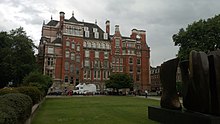
The archbishop of Canterbury is the senior bishop and a principal leader of the Church of England, the ceremonial head of the worldwide Anglican Communion and the bishop of the Diocese of Canterbury. The current archbishop is Justin Welby, who was enthroned at Canterbury Cathedral on 21 March 2013. Welby is the 105th person to hold the position, as part of a line of succession going back to the "Apostle to the English" Augustine of Canterbury, who was sent to the island by the church in Rome in 597. Welby succeeded Rowan Williams.

John Whitgift was the Archbishop of Canterbury from 1583 to his death. Noted for his hospitality, he was somewhat ostentatious in his habits, sometimes visiting Canterbury and other towns attended by a retinue of 800 horses. Whitgift's theological views were often controversial.

John Kemp was a medieval English cardinal, Archbishop of Canterbury, and Lord Chancellor of England.
William Courtenay was Archbishop of Canterbury (1381–1396), having previously been Bishop of Hereford and Bishop of London.

The Church House is the home of the headquarters of the Church of England, occupying the south end of Dean's Yard next to Westminster Abbey in London. Besides providing administrative offices for the Church Commissioners, the Archbishops' Council and the Church of England Pensions Board, and a chamber for the General Synod, the building also provided a meeting place for the Parliament of the United Kingdom during World War II, and for some of the organs of the newly formed United Nations afterwards, including the first meeting of the UN Security Council. It has more recently been the venue for several notable public enquiries.
Sir Andreas Whittam Smith, is an English financial journalist, who was one of the founders of The Independent newspaper, which began publication in October 1986 with Whittam Smith as editor. He is a former president of the British Board of Film Classification.

Æthelred was an Anglo-Saxon Archbishop of Canterbury in medieval England. Although one source states that he was Bishop of Wiltshire prior to his elevation to Canterbury, this has been shown to be false. Much of Æthelred's time in office was spent dealing with the dislocations caused by the invasion of England by Vikings. There were also conflicts with King Alfred the Great over ecclesiastical matters as well as the desire of the papacy to reform the English clergy.
The Ecclesiastical Commissioners were, in England and Wales, a body corporate, whose full title was Ecclesiastical and Church Estates Commissioners for England. The commissioners were authorised to determine the distribution of revenues of the Church of England, and they made extensive changes in how revenues were distributed. The modern successor body thereof are the Church Commissioners.

Alfred George Edwards, known as A. G. Edwards, was elected the first archbishop of the disestablished Church in Wales.
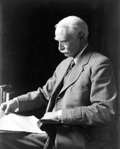
William Douglas Caröe was a British architect, particularly of churches.

The Bishop of Winchester is the diocesan bishop of the Diocese of Winchester in the Church of England. The bishop's seat (cathedra) is at Winchester Cathedral in Hampshire.
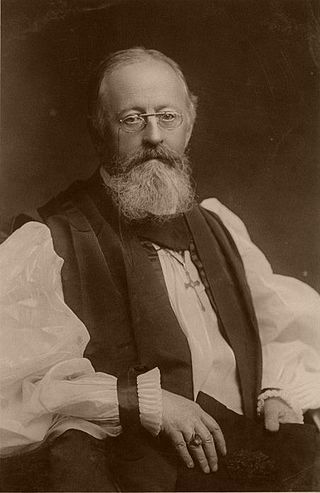
William Walsh was a Prebendary of St Paul's Cathedral, Bishop of Mauritius and Dover. At the end of his life he was Archdeacon of Canterbury. While he was Bishop of Mauritius, the island experienced one of its worst cyclones; in consequence his cathedral had to be used temporarily as a hospital.
Archibald Ronald McDonald Gordon was a British Anglican bishop. He was the Bishop of Portsmouth from 1975 to 1984. He was the Bishop at Lambeth from 1984 and, additionally, the Bishop to the Forces from 1985. He ended his career as sub-dean at Christ Church, Oxford, from 1991 to 1996.
The Archbishops' Council is a part of the governance structures of the Church of England. Its headquarters are at Church House, Great Smith Street, London.
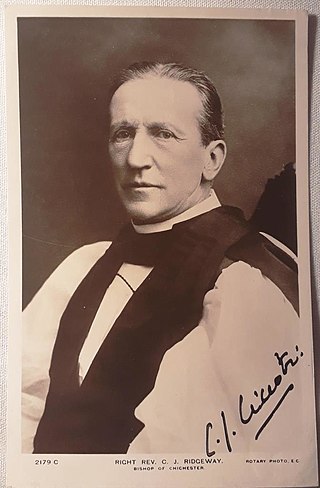
Charles John Ridgeway was an English churchman, the Bishop of Chichester from 1908 to 1919.

The trial of William Laud, archbishop of Canterbury, took place in stages in the first half of the 1640s, and resulted in his execution on treason charges. At first an impeachment, the parliamentary legal proceedings became an act of attainder.
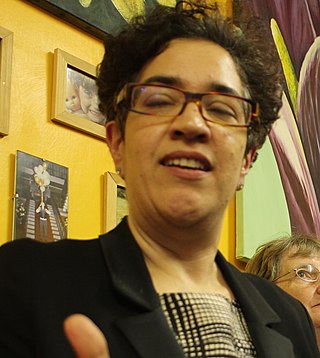
Loretta Caroline Rose Minghella is a British academic administrator and former charity executive. Since 2021, she has served as Master of Clare College, Cambridge, her alma mater. Previously, she was the Chief Executive Officer of Christian Aid, and served as the First Church Estates Commissioner, one of the most senior lay people in the Church of England.
The Lambeth Awards are awarded by the Archbishop of Canterbury. In addition to the Lambeth degrees, there are a number of non-academic awards. Before 2016, these awards consisted of the Lambeth Cross, the Canterbury Cross, and the Cross of St Augustine. In 2016, these awards were expanded with six new awards named after previous Archbishops of Canterbury.
Margaret Heather Laird, was a British teacher and senior laywoman in the Church of England. From 1989 to 1999, she served as the Third Church Estates Commissioner, having been appointed by the Archbishop of Canterbury; the Church Commissioners is a body which administers the property assets of the Church of England and the Third Church Estates Commissioner attends the Church's General Synod.
